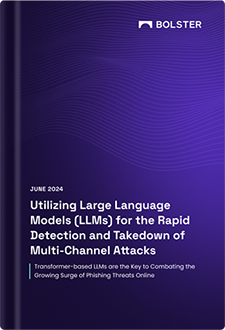Why you should scan URLs?
You should scan URLs to assess the security of a website or web application. Scanning involves the systematic examination of the URL to identify vulnerabilities, potential threats, and weaknesses that could be exploited by malicious actors.
You scan URLs to uncover any security flaws that may exist within the website or web application. This includes identifying common vulnerabilities such as cross-site scripting (XSS), SQL injection, insecure server configurations, and outdated software versions. By conducting regular URL scans, IT security and risk management professionals can proactively detect and mitigate these vulnerabilities before they are exploited by attackers.
You also scan URLs to help ensure compliance with industry standards and regulations. Many regulatory frameworks, such as the Payment Card Industry Data Security Standard (PCI DSS), require organizations to regularly scan URLs for security vulnerabilities. By conducting these scans, organizations can demonstrate their commitment to safety.
Another purpose of scanning a URL is to assess the overall security posture of a website or web application. By identifying vulnerabilities and weaknesses, IT professionals can prioritize their efforts and allocate resources to address the most critical issues. This enables them to enhance the security of the URL and mitigate potential risks effectively.
Additionally, malware or suspicious activities associated with the website can be detected when you scan URLs. Malware can be hidden within the URL or embedded in the website’s content, and scanning helps in identifying such malicious elements. By promptly detecting and removing malware, organizations can protect their users from dangerous potential data breaches and other harmful consequences.
Potential risks when you scan URLs
As IT security and risk management professionals, it is crucial to understand the potential risks associated with scanning a URL. While URL scanning plays a vital role in identifying and mitigating potential security threats, it is not without its own set of risks. Let’s delve into some of these risks:
1. Malicious code execution: When you scan URLs, you access the provided web address, which can sometimes contain malicious code or scripts. If the scanning tool or process does not have sufficient security measures in place, it may inadvertently execute the malicious code, leading to system compromise or unintended consequences.
2. Phishing attacks: URLs can be crafted in a way that mimics legitimate websites but directs users to malicious content. When scanning such deceptive URLs, there is a risk of falling victim to a phishing attack if the scanning process interacts with the malicious content unknowingly. This can lead to sensitive information being exposed or unauthorized access to systems.
3. Denial of Service (DoS) attacks: Denial of Service (DoS) are active attacks that can be triggered when you scan URLs. If the scanning process overwhelms the target server with too many requests or consumes excessive resources, it can result in the target system becoming unresponsive or unavailable, causing disruption to legitimate users.
4. False positives or negatives: The tools that scan URLs rely on a set of predefined rules and signatures to identify potential threats. However, these tools are not foolproof and can generate false positives (flagging harmless URLs as malicious) or false negatives (failing to detect actual threats). Depending on the accuracy of the scanning tool or the configuration of the rules, there is a risk of either overlooking real threats or falsely flagging legitimate URLs, which can lead to unnecessary security measures or vulnerabilities being overlooked.
How can these risks be mitigated?
While there are risks when you scan URLs, they can be mitigated through various measures. Here are some best practices for mitigating these risks:
1. Use reputable scanners: Choose URL scanning technology from trusted and reputable sources. Make sure that the tool has a good track record of accurately identifying threats and is regularly updated to detect the latest malicious codes and techniques.
2. Implement sandboxing or virtual environments: Set up sandboxing or virtual environments to isolate the scanning process from the rest of the systems. This way, even if the scanning process encounters malicious code, it will be contained within the isolated environment, reducing the risk of system compromise.
3. Maintain up-to-date security measures: Ensure that the scanning tool and the systems it runs on have the latest security patches and updates installed. Regularly update the scanning tool’s signature database to enhance its ability to detect new and evolving threats.
4. Educate users and raise awareness: Provide training and education to users and employees about the risks associated with clicking on suspicious URLs. Encourage them to be cautious and to report any suspicious URLs they encounter. This will help in preventing phishing attacks and minimizing the risk of unintentional exposure to malicious content.
5. Conduct regular vulnerability assessments: Regularly conduct vulnerability assessments to identify any potential weaknesses in your systems and network infrastructure. This will help you stay proactive in addressing any vulnerabilities before they can be exploited by attackers.
6. Implement strong access controls: Limit access to the URL scanning tool and its results to authorized personnel only. Use strong authentication mechanisms such as multi-factor authentication to ensure that only trusted individuals can access and use the tool.
7. Regularly review and update scanning rules: Periodically review and update the rules and signatures used by the URL scanning tool. This will help in improving the accuracy of the tool and reducing the chances of false positives or negatives.
8. Monitor and analyze scanning results: Regularly monitor and analyze the results generated by the URL scanning tool. Look for any patterns or trends that may indicate emerging threats or vulnerabilities. This will help you take proactive measures to mitigate any potential risks.
9. Have incident response plans in place: Develop and maintain incident response plans that outline the steps to be taken in case of a security incident or breach related to URL scanning. This will help you respond effectively and minimize the impact of such incidents.
In conclusion, while there are risks to consider when you scan URLs, they can be effectively mitigated through the implementation of best practices and proactive security measures. By using reputable scanning tools, maintaining up-to-date security measures, educating users, and conducting regular vulnerability assessments, organizations can significantly reduce the risks and enhance their overall security posture.
About CheckPhish
CheckPhish is the place to start for domain monitoring. CheckPhish is a real-time URL and website scanner. Once a URL is submitted, our engine spins up an automated headless browser to capture a live screenshot, natural language content on the webpage, DOM, WHOIS, and other essential information. The engine sends this information to multiple deep learning models in the backend that can recognize essential signals like brand logos, sign-in forms, and intent. Our engine then combines these signals with our proprietary threat intel data to identify phishing and scam pages.






